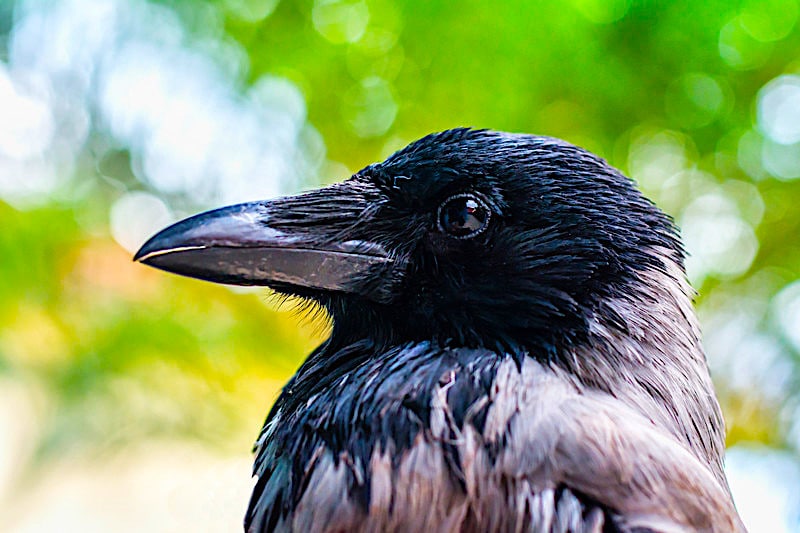Have you ever heard about a bird holding a grudge, crafting its own tools, or remembering a human’s face? The crow is argued to be one of the most intelligent birds to exist.
According to the University of Washington, crows can recognize and remember your face for years.
But do their smarts help them find food? How are they able to use this gift of knowledge to thrive in a world that is heavily populated with humans? If you’re curious about these quick-witted animals and what they eat, then read on.
What do crows eat?
Crows are omnivores and will eat just about anything that they can find such as animal-based meal items including amphibians, reptiles, insects, eggs, and invertebrates such as worms. As for plants, they consume seeds, fruit, nuts, and grains. making them opportunistic feeders. They eat both, plant matter and meat belonging to other animals.
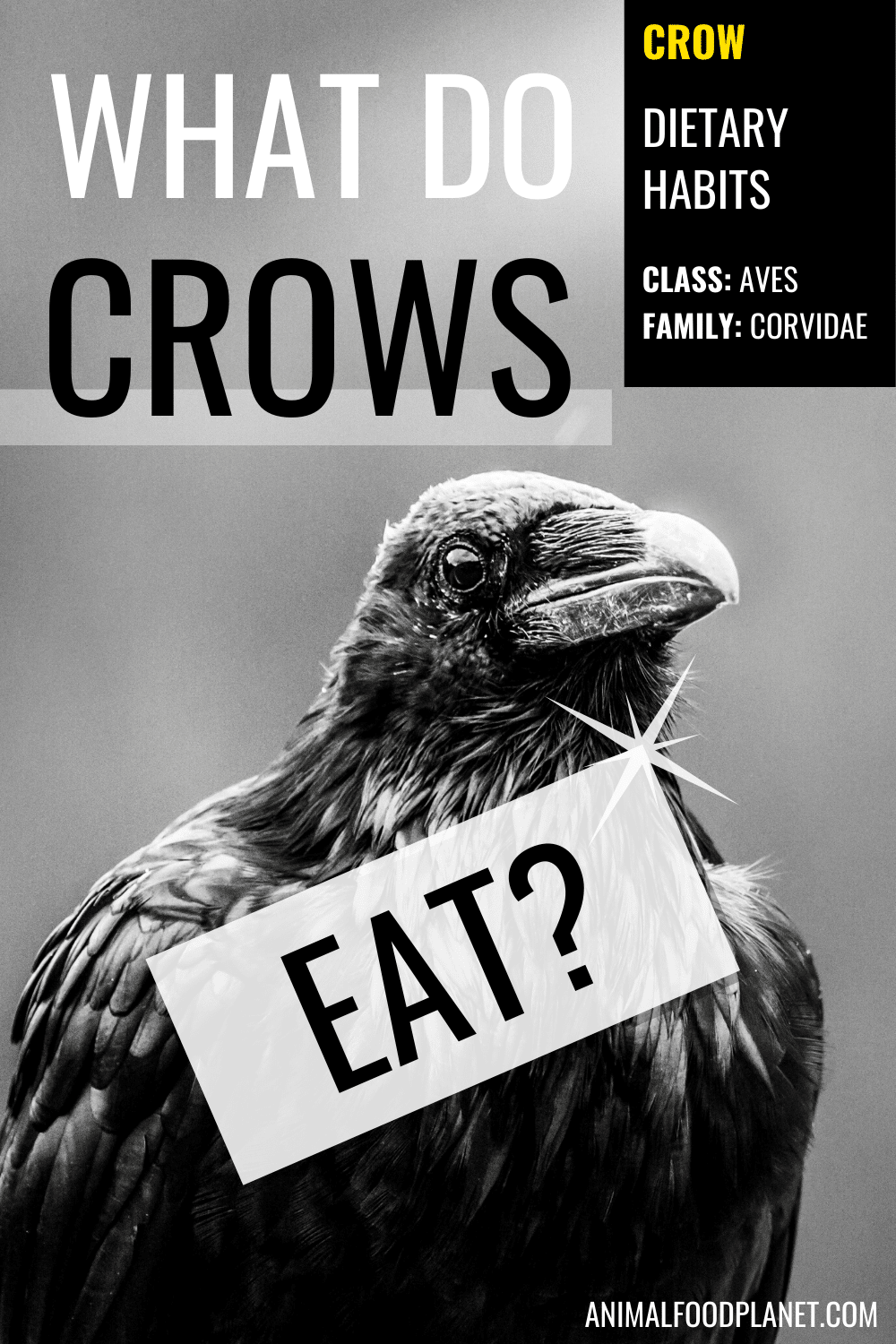
What Do Crows Eat?
The family to which these birds belong is one of the most studied among bird-watchers or ornithologists.
CROW TAXONOMY
Crows can be found in the family Corvidae. You may have heard about “corvids”, a nickname given to this family. This grouping includes over 120 species. These individuals share a medium body size, bulky bills, large feet, and a distribution that extends nearly all over the world. Crows specifically are found in the genus Corvus along with ravens, rooks, and jackdaws. Crows are known for their rich black feathers, heavy dark bills, and large legs meant for perching and holding items.
The crow is a highly adaptable bird that thrives in a myriad of different habitats. Depending on their surroundings, they make the most out of available meals.
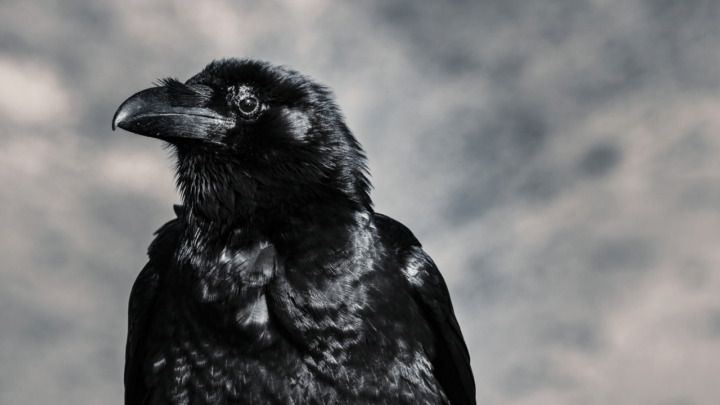
What do crows eat They are omnivores
WHAT DO CROWS EAT IN THE WILD
Being found in every pocket of the Earth aside from Antarctica makes for a lot of possible decisions in terms of finding a meal. To fully understand what a crow will consume, it’s best to look at a few species in particular.
American Crow
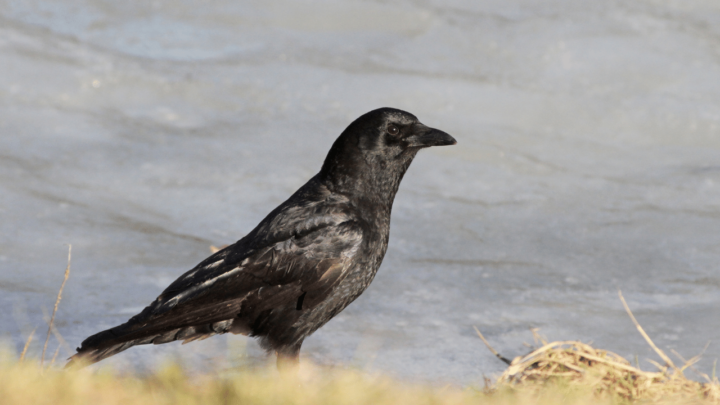
American Crow
The American crow (Corvus brachyrhynchos) is a fairly large bird, weighing in around 316 to 620 grams with a wingspan of 85 to 100 centimeters. True to the common look of a crow, they have a black body, bill, and legs. They tend to inhabit fields, woodlands, forests, and suburban areas. The American crow is found nearly all over North America.
As for what they eat, these individuals eat insects such as beetles, grasshoppers, spiders, and millipedes. They also consume a number of reptiles, amphibians, and other birds, including stolen eggs. Small mammals including mice and voles have been a targeted item. The American crow will also prey on plant-based items like peas, grapes, cherries, apples, and corn.
Hooded Crow
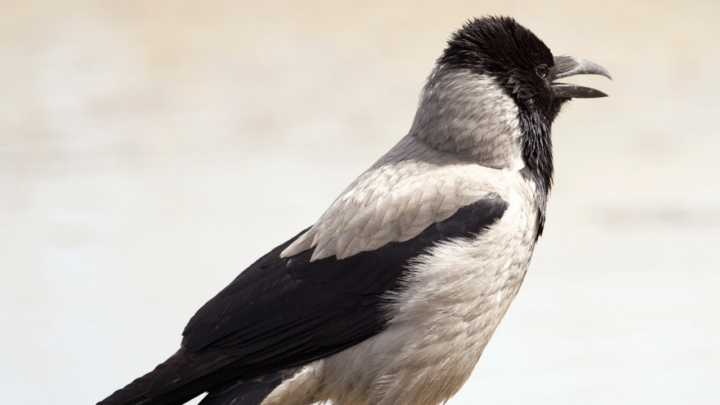
Hooded Crow
Not all crows sport a solely black appearance. The Hooded crow (Corvus cornix) has a purely black head and legs with grey patches along the shoulders and underbelly.
It typically is about the same size as the American crow at about 370 to 650 grams with a wingspan of about 100 centimeters.
These birds are found in open woodlands, farmlands, and moorlands of northern and eastern European countries. In fact, it is called the “mist crow” in Germany.
The Hooded crow has adapted to finding food that is more aquatic. They take advantage of the nearby cliffs and ocean, using the rocks to crack open the outer skeletons of mollusks and crabs.
This is achieved by dropping them at a thoroughly calculated height. They will also steal puffin eggs when given the chance.
In addition to these preferred meals, the Hooded crow will consume carrion, insects, grain, fruit, amphibians, and mammals. All in all, they are quite skilled scavengers.
Torresian Crow
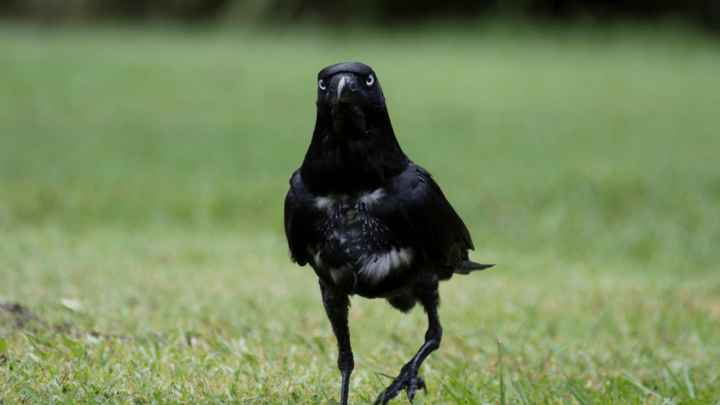
Torresian Crow
Australia is known for its harsh seasonal changes, making foraging a challenging place to find food. So then what do crows eat in Australia?
The Torresian crow (Corvus orru) is the perfect example of a bird thriving on this continent.
Approximately the same size as the two previously mentioned species, these individuals range in size from 48 to 53 centimeters.
They’re known for their glossy black plumage with a duller coloring on the chest. It prefers to live near the beaches, forests, woodlands, and farmlands of northern and western Australia.
The main source of food for the Torresian crow is actually grains. This is because of the various croplands that it tends to forage in.
They also can be found preying off of fruits, insects, invertebrates, and abandoned garbage. These birds also make the most of suburban areas, feeding off of carrion along the various roads.
WHAT DO CROWS EAT IN THE GARDEN?
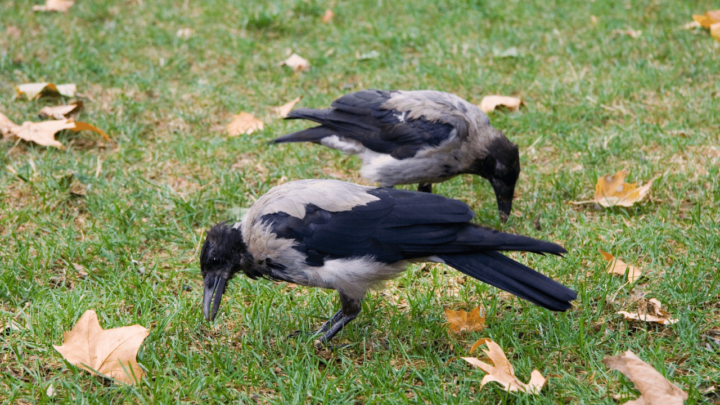
What do crows eat in the garden
There has been quite a bit of debate about crows causing a nuisance to people’s gardens.
This is where the word “scarecrow” got its origin. It’s true that these animals will forage for insects and grubs, but that’s not entirely bad.
Insects have been known to damage plants, making the digging that a crow does somewhat beneficial.
In addition to worms and insects, crows have also been known to feed off of fruits and vegetables found in the garden. This is less desirable from a gardener’s point of view.
WHAT DO CROWS EAT IN THE GRASS?
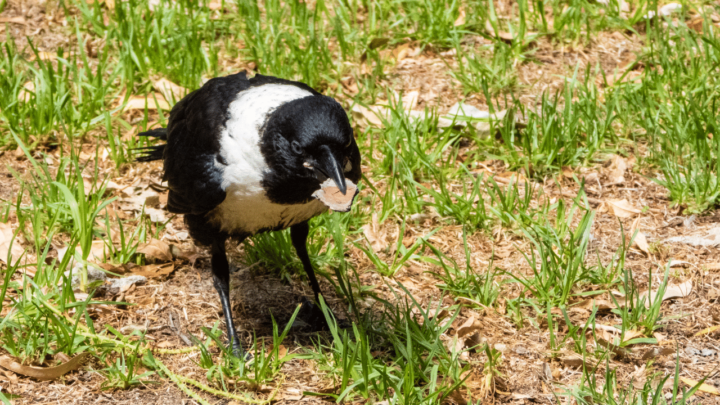
What do crows eat in the grass
Another spot where you might see a group of crows is in your backyard or on the grass at a nearby park. You may spot a crow using its strong bill to take chunks out of the grass and throw them aside.
This is them foraging for beetles and other insects.
Again, this may actually be a good thing. The grubs found underground will attack the roots belonging to various grass species. Without the grubs feeding off of these foundational structures, lawns and parks can continue to grow.
WHAT DO CROWS EAT IN THE WINTER?
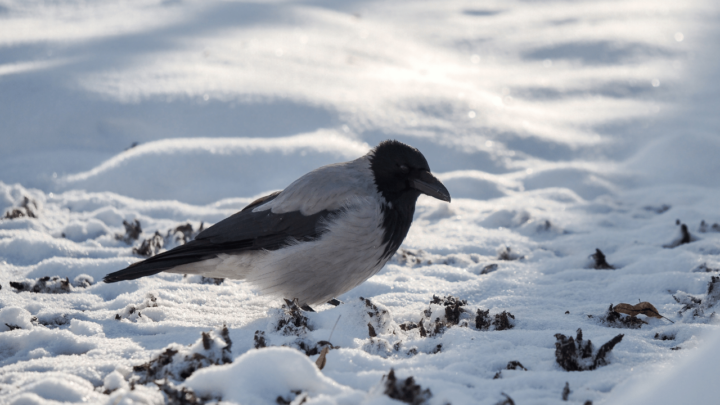
What do crows eat in winter
It’s no surprise that some animals choose to hibernate when winter comes around. But what happens to crows in these harsh seasons?
Some of them go into a state known as “torpor” where their bodies become inactive, yet this usually lasts less than a full day.
Crows can find enough food to survive the winter without shutting their bodies down. Finding foods with higher energy like seeds and insects are achieved through a little digging.
They will also take advantage of animals that were unable to survive the cold temperatures in the shape of carrion.
WHAT DO CROWS DRINK?
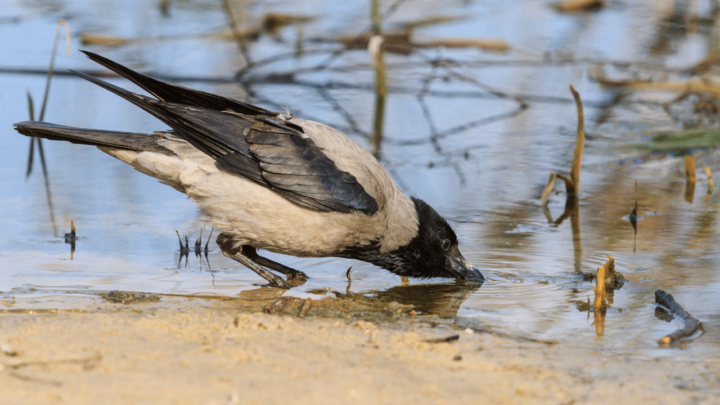
Crow drinking
Just like many other types of animals, crows get a lot of their daily water requirements through the foods that they eat.
This does not mean, however, that they will refuse to drink out of the birdbath when given the opportunity.
It is even fairly common to see a crow drinking in shallow water.
Another reason why crows don’t need to drink much is due to the fact that they don’t sweat in the same way that mammals do.
Birds don’t have sweat glands, which is one of the main ways an animal loses water.
CROW DIGESTION
Just like any other bird, crows do not have teeth. Instead, they are given a modified digestive system to successfully gain nutrients from their prey.
If the food item is too big, the crow will use its strong bill to break apart pieces. For meals that are small enough, they go straight down the hatchet.
Once down the throat, the food will be temporarily stored into the crop until it is ready to move along to the first part of the stomach, the proventriculus.
This is where stomach acids will begin to break down the particles. Then the second part of the stomach, also known as the gizzard, will grind the item into small enough pieces to pass along to the intestines before exiting the body.
WHAT DO BABY CROWS EAT?
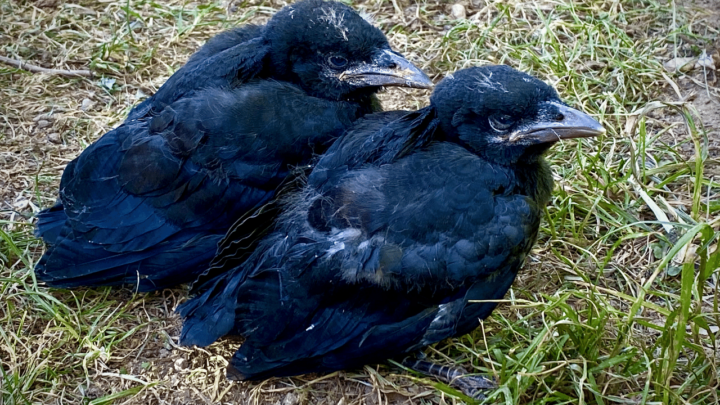
What do baby crows eat
Once born, a baby crow, or chick, only has about four weeks until it is ready to leave the nest.
This can only happen with the right nutrition. In the first few weeks, an adult crow will give their young partially digested food.
As the chicks become stronger, they are fed torn pieces of small mammals and insects. Surprisingly, once a crow leaves the nest, it will continue to live with its parents, creating a flock, or murder.
WHAT DO CROWS IN CAPTIVITY EAT?
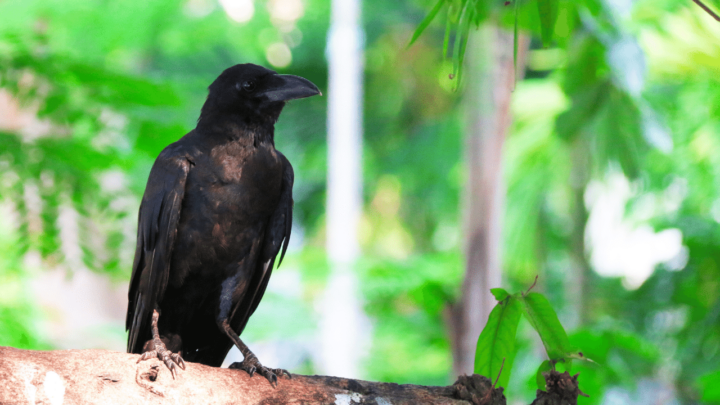
What crows in captivity eat
You might have gone to your local zoo and noticed a crow in one of the aviaries.
For the most part, crows aren’t found in captivity unless they cannot be released back into the wild after an injury.
In these circumstances, it is important for them to get the right nutrition.
For birds kept in captivity, they are generally fed meals that resemble what they would get in the wild.
This generally includes various bugs, fruits, and small rodents.
Now that you know what they eat in the wild, you can see how expansive their diets are.
It is important to give them this amount of diversity when held behind an enclosure. This keeps them both entertained and properly fed.
What is the difference between a Crow and a Raven?
One of the hardest things to tell apart for many people is the difference between these two blackbirds. They both belong to the same family and genus, making it all that more tricky. The biggest differences can be found in their size, tail shape, and sounds.
Crows are known to be the smaller of the two by sometimes half their body weight. The tail of a crow is more uniform than a raven’s.
When in flight, raven tails look more wedge-shaped, or diamond-like, while crows are uniform across the bottom. If you’ve ever heard a bird sound of a “caw” sound, then it was most likely a crow.
Ravens, on the other hand, resemble more of a lower croaking sound. Another separation is that crows tend to fly in larger groups called a “murder” whereas ravens are more likely to travel with a mate.
What can I feed wild crows?
Some people like to attract crows, using food as an incentive. If you want to feed a wild crow, it is important to simply leave food outside instead of trying to feed it from the palm of your hand.
Although they don’t have teeth, those beaks are powerful. If you do want to go about leaving food outside for a crow, you don’t have to look hard.
Crows are opportunistic scavengers, meaning that they will eat a wide variety of items. Peanuts, pet food, and fruit have all been used to befriend crows.
Do crows make good pets?
In most places, it is illegal to own a crow as a pet. They are considered wild animals. And although they might seem like an entertaining birds to own, this is not in their best interest.
Because of how smart they are, keeping a crow in captivity would be extremely boring. This can lead to a variety of issues such as the crow becoming destructive or dangerous.
What eats crows?
There are a number of predators that crows have to look out for. Hawks and owls comprise the most common threats in their natural environment. During daylight hours, hawks have been known to kill adult and juvenile crows.
When it gets dark, crows need to take refuge through perching. This is when owls can attack them. Humans can also be considered a predator.
Although crows are protected under the Migratory Bird Treaty Act, a number of people still shoot these birds out of fear and sport. If you do not want crows in your garden, there are humane options that will deter these animals.
How smart are crows?
Scientists have been able to determine that crows are among the smartest birds currently known to exist. But how smart are they? The answer: as smart as a seven-year-old child.
A series of completed tests have proved that these birds are indeed brainy. To put it into context, let’s imagine a situation. Let’s say that someone tormented an individual crow.
This bird would not only remember the act but also proceed to tell other corvids about the perpetrator for future reference. These listeners then can pass on the same information until a new generation of crows can recognize that same individual and attack them for their previous wrongdoings.
Not many animals are able to do this. Other examples of their intelligence are tool crafting, problem-solving, and stashing food away in a secret location only if they aren’t being watched.
The term “bird brain” is a strongly believed misconception. Crows are intelligent animals that are capable of a series of complex behaviors.
As opportunistic scavengers, these birds can eat anything that they come across.
This includes insects, amphibians, reptiles, invertebrates, seeds, grains, fruits, eggs, and carrion.
The next time you see this medium-sized glossy blackbird, remember that it’s skilled at adapting.

